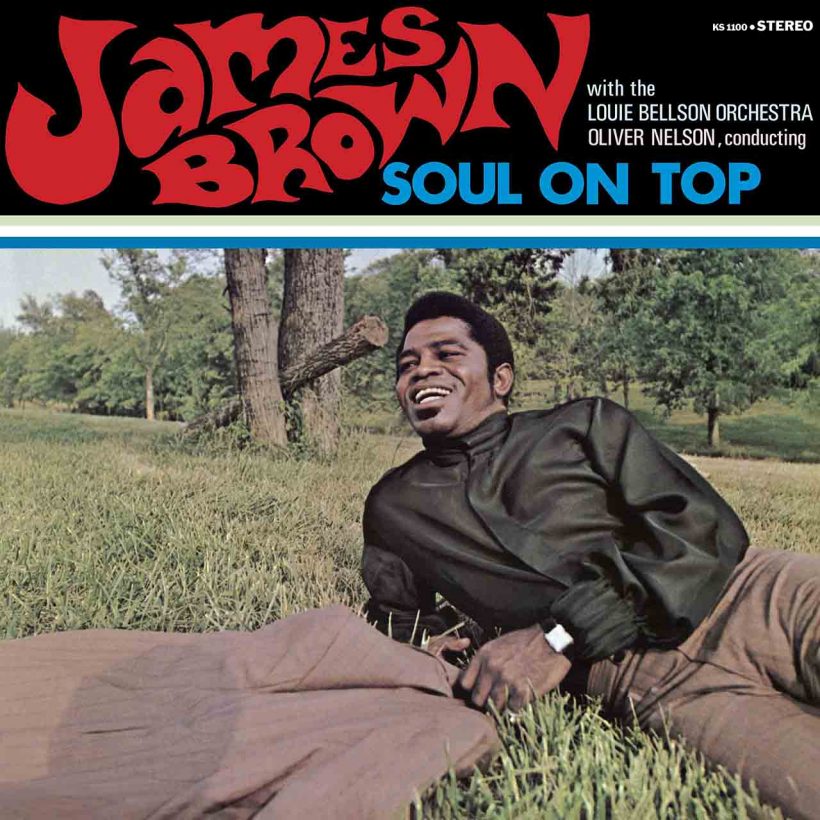‘Soul On Top’: James Brown’s Big Band Jazz Album
With this album, The Godfather of Soul effortlessly showcased how intrinsic jazz was to his musical arc.

For funk aficionados, James Brown’s 1969/1970 output represents the roots of a revolution – the watershed development of extended grooves from which disco, hip-hop, and essentially all other genres of modern dance music would eventually sprout. Which is why, initially, Soul On Top appears to be such a period anomaly. Recorded in November 1969, it’s a big band jazz album heavy on covers and standards, with respected drummer Louie Bellson and arranger Oliver Nelson, and an orchestra of seasoned West Coast session players largely subbing in for James’s own ensemble.
Yet, for Brown, it made complete sense. “At heart, I’ve always been a jazz man,” he told critic Leonard Feather at the time, having long expressed his admiration for the big bands that toured the Macon, Georgia, of his youth. The Godfather of Soul knew how intrinsic jazz was to his musical arc, as exemplified by his reliance on jazz-trained musicians/musical directors like Maceo Parker, Fred Wesley, and Pee Wee Ellis, who could cleverly co-opt the main riff from Miles Davis’s “So What” for the proto-funk of “Cold Sweat.” Soul On Top allowed him to make that connection even more explicit, and he seized it with his signature fervor.
Buy a vinyl copy of James Brown’s Soul on Top now.
Renowned as a ruthlessly meticulous bandleader, Brown sounds exceedingly comfortable as an interpreter afloat the Bellson’s orchestra’s tight execution of Nelson’s arrangements on romantic ballads like “That’s My Desire” and “It’s Magic,” or effortlessly swinging numbers like “Everyday I Have the Blues” and “I Need Your Key (To Turn Me On).” But most memorable is Brown’s ability to morph Bellson and company into his own vamping R&B big band, rhythmically emphasizing the one with the same conviction as his concurrent funk experiments. He transforms country legend Hank Williams’ “Your Cheating Heart” into a brassy soul screamer, and infuses Kurt Weill’s “September Song” with similarly ample doses of oomph.
Of course, it’s the new readings of his own tunes that generate the most excitement. A staple of Brown’s late 60s live show, “There Was a Time” is presented here fast and ferociously compact, nearly spinning out of control. “Papa’s Got a Brand New Bag” steadily builds momentum until Brown and Parker (the only holdover from JB’s regular group) are trading phrases back and forth like they’re onstage at the Apollo. “It’s a Man’s, Man’s, Man’s World” encapsulates all the finest aspects of the LP’s stylistic merger, again building up to a vamp during which every subtle change in instrumentation masterfully shifts the energy levels. Enraptured by Bellson’s band’s relentless pulse and piercing horn stabs, James ad-libs, “It’s in my collar/ I got to holler… It’s in my shake/ About to work me to death,” before unleashing a hair-raising howl. A few days later, he would reprise the same phrases in a Cincinnati studio while recording the epochal break-beat sample source single, “Funky Drummer.” Soul On Top’s ostensible jazz and blues throwbacks were in closer proximity to the grooves of tomorrow than anyone realized.













donnellboozer60@gmail.com
January 5, 2024 at 7:44 am
This is a man’s world, but it wouldn’t mean nothing without a woman or a girl. James Brown was the master musician and arranger….